Search Result
Results for "
Human liver microsomes
" in MedChemExpress (MCE) Product Catalog:
3
Isotope-Labeled Compounds
| Cat. No. |
Product Name |
Target |
Research Areas |
Chemical Structure |
-
- HY-N5132
-
|
|
Others
|
Others
|
|
(-)-Fenchone, a bicyclic monoterpene, is widely distributed in plants and found in essential oils from Foeniculum vulgare. (-)-Fenchone is oxidized to 6-endo-hydroxyfenchone, 6-exo-hydroxyfenchone and 10-hydroxyfenchone derivatives by CYP2A6 and CYP2B6 in human liver microsomes with CYP2A6 playing a more important role than CYP2B6 .
|
-
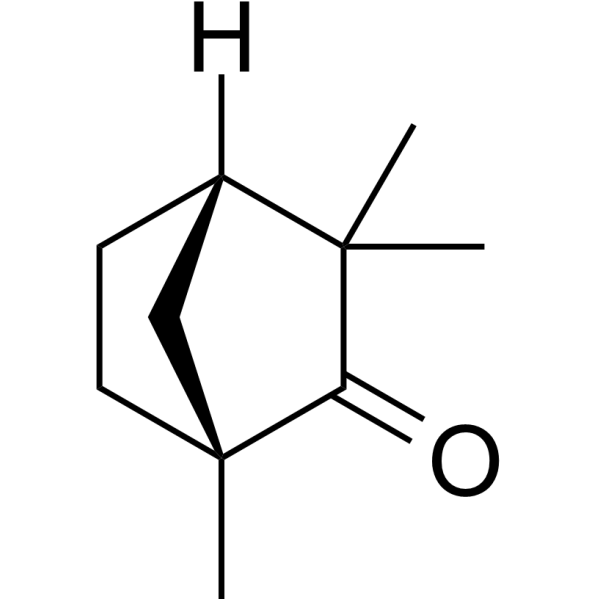
-
- HY-112690A
-
|
Remofovir mesylate
|
Cytochrome P450
|
Metabolic Disease
|
|
Pradefovir mesylate is a good substrate for liver CYP3A4. Pradefovir is converted to 9-(2-phosphonylmethoxyethyl)adenine (PMEA) in human liver microsomes with a Km of 60 μM.
|
-
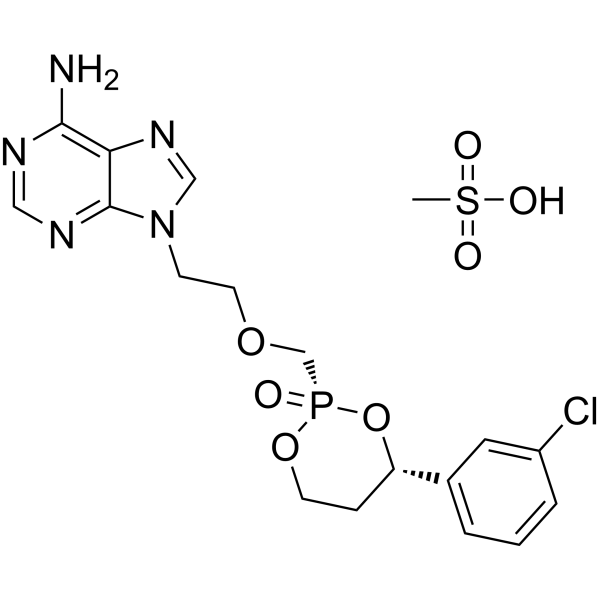
-
- HY-N8094
-
|
|
Cytochrome P450
|
Others
|
|
Kushenol M is a flavonoid from Sophora flavescens. Kushenol M is a cytochrome P450 (CYP) inhibitor, with IC50 values of 1.29 μM for CYP3A4 in human liver microsomes .
|
-
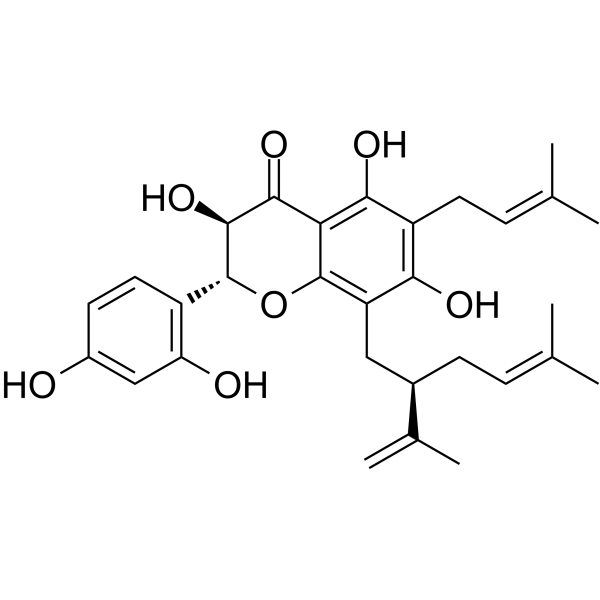
-
- HY-150578
-
|
|
Keap1-Nrf2
|
Inflammation/Immunology
|
|
Keap1-Nrf2-IN-12 is a potent Keap1-Nrf2 inhibitor with an IC50 value of 2.30 µM. Keap1-Nrf2-IN-12 shows metabolic stability in human liver microsomes .
|
-

-
- HY-B0794S
-
|
|
EGFR
IGF-1R
Drug Metabolite
|
Others
|
|
AZ7550-d5 is the deuterium labeled AZ7550 (HY-B0794). AZ7550, an active metabolite of Osimtinib (AZD9291; HY-15772), inhibits the activity of IGF1R with an IC50 of 1.6 μM[1][2].
|
-
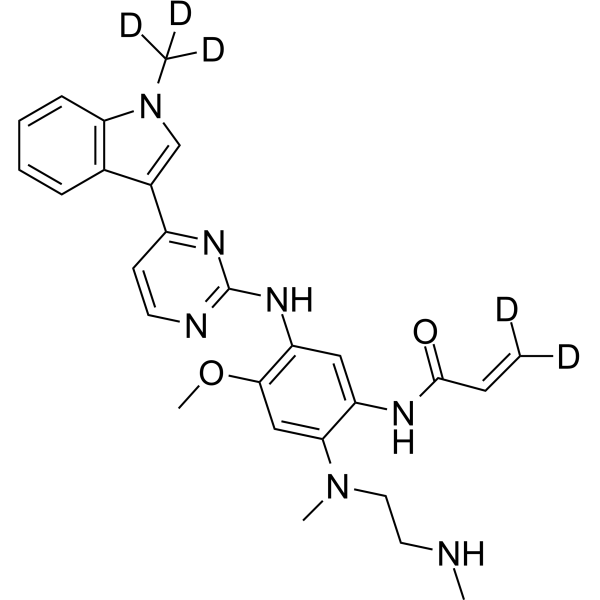
-
- HY-16718
-
|
PF-00251802
|
Glucocorticoid Receptor
Cytochrome P450
|
Inflammation/Immunology
Endocrinology
|
|
Dagrocorat (PF-00251802) is an orally active and selective high-affinity partial agonist of the glucocorticoid receptor. Dagrocorat is also a time-dependent reversible inhibitor of CYP3A (IC50=1.3 μM in human liver microsomes) and CYP2D6 (Ki=0.57 μM in human liver microsomes). Dagrocorat can be used for the research of rheumatoid arthritis .
|
-

-
- HY-16718A
-
|
PF-00251802 hydrochloride
|
Glucocorticoid Receptor
Cytochrome P450
|
Inflammation/Immunology
Endocrinology
|
|
Dagrocorat (PF-00251802) hydrochloride is an orally active and selective high-affinity partial agonist of the glucocorticoid receptor. Dagrocorat hydrochloride is also a time-dependent reversible inhibitor of CYP3A (IC50=1.3 μM in human liver microsomes) and CYP2D6 (Ki=0.57 μM in human liver microsomes). Dagrocorat hydrochloride can be used for the research of rheumatoid arthritis .
|
-
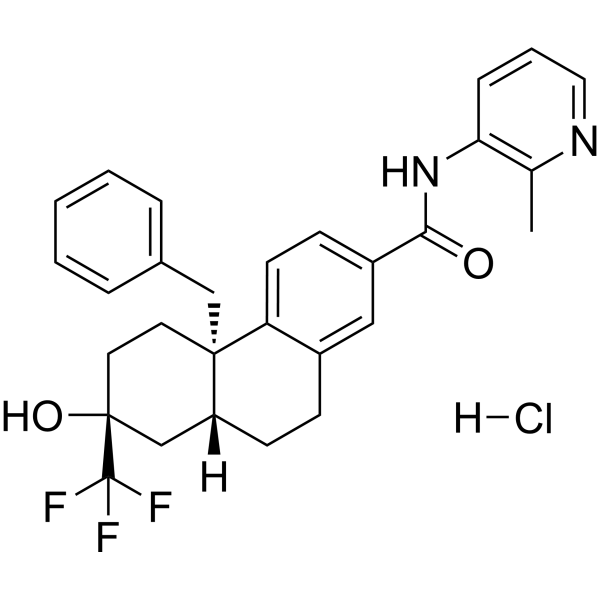
-
- HY-100644
-
|
Trimethoprim 1-N-oxide
|
|
|
|
Trimethoprim N-oxide (Trimethoprim 1-N-oxide) belongs to human urinary metabolites. Trimethoprim N-oxide is generated by oxidation of nitrogen atoms in the pyrimidine ring. Trimethoprim N-oxide is formed predominantly by CYP1A2 in human liver microsomes .
|
-
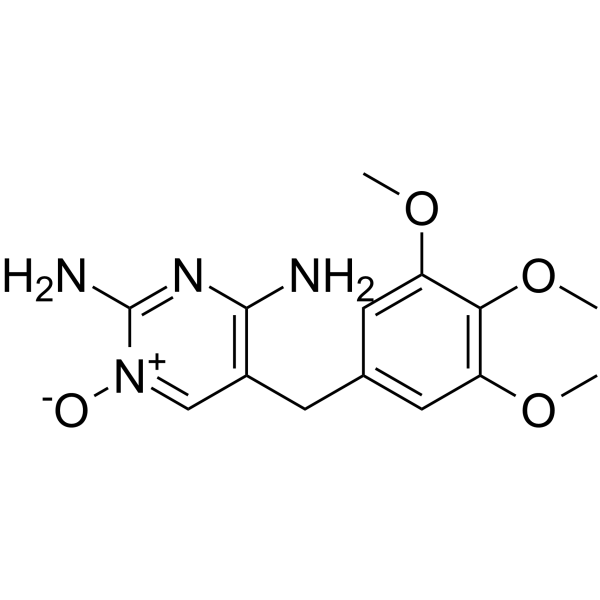
-
- HY-B0476
-
|
Acetophenetidin
|
COX
|
Inflammation/Immunology
|
|
Phenacetin (Acetophenetidin) is a non-opioid analgesic/antipyretic agent. Phenacetin is a selective COX-3 inhibitor. Phenacetin is used as probe of cytochrome P450 enzymes CYP1A2 in human liver microsomes and in rats .
|
-
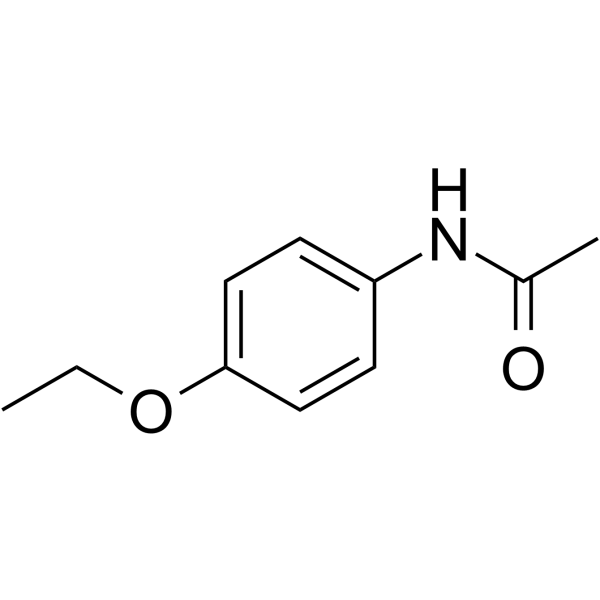
-
- HY-N1483
-
|
|
Potassium Channel
|
Cardiovascular Disease
|
|
Guanfu base A is an antiarrhythmic alkaloid isolated from Aconitum coreanum and is a potent noncompetitive CYP2D6 inhibitor, with a Ki of 1.20 μM in human liver microsomes (HLMs) and a Ki of 0.37 μM for the human recombinant form (rCYP2D6). Guanfu base A is also a potent competitive inhibitor of CYP2D in monkey (Ki of 0.38 μM) and dog (Ki of 2.4 μM) microsomes . Guanfu base A also inhibits HERG channel current .
|
-
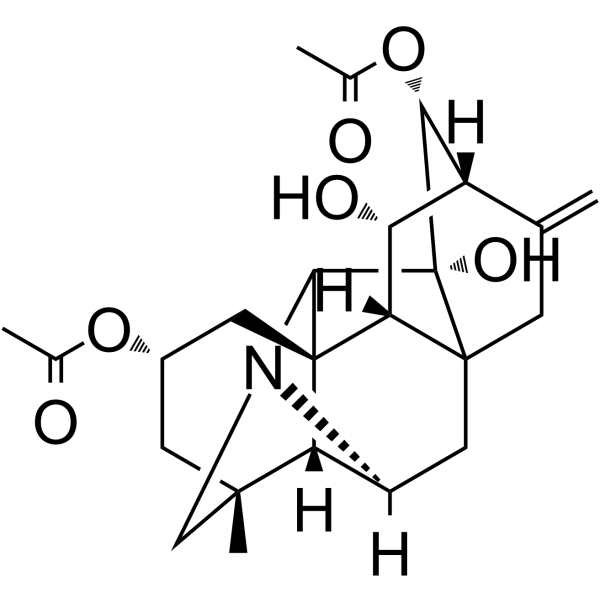
-
- HY-N11676
-
|
|
Drug Metabolite
|
Cancer
|
|
6-Hydroxy-TSU-68 is a derivative of TSU-68 (HY-10517). It is a metabolite of the biotransformation pathway of TSU-68 in human liver microsomes. The content represents the self-induced hydroxylation level of TSU-68 .
|
-

-
- HY-N11677
-
|
|
Drug Metabolite
|
Others
|
|
7-Hydroxy-TSU-68 is a derivative of TSU-68 (HY-10517). It is a metabolite of the biotransformation pathway of TSU-68 in human liver microsomes. The content represents the self-induced hydroxylation level of TSU-68 .
|
-
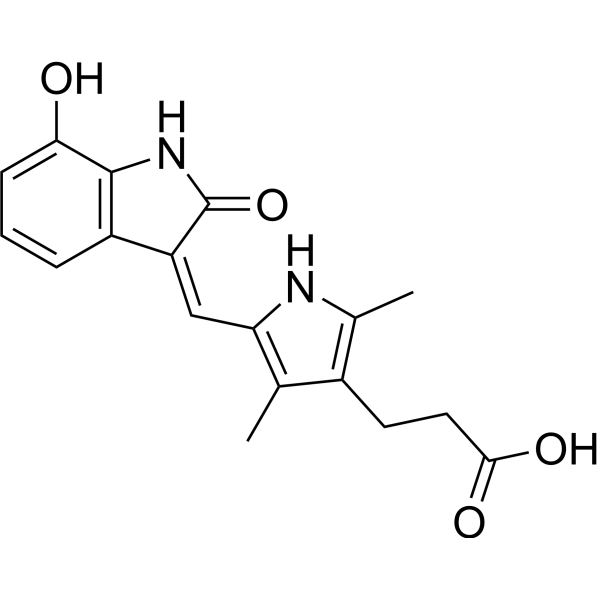
-
- HY-129105
-
|
|
GABA Receptor
Cytochrome P450
|
Neurological Disease
|
|
Chlormethiazole is an potent and orally active GABAA agonist . Chlormethiazole inhibits cytochrome P450 isoforms: CYP2A6 and CYP2E1 in human liver microsomes. Chlormethiazole is an anticonvulsant agent and has the potential for treating convulsive status epilepticus .
|
-
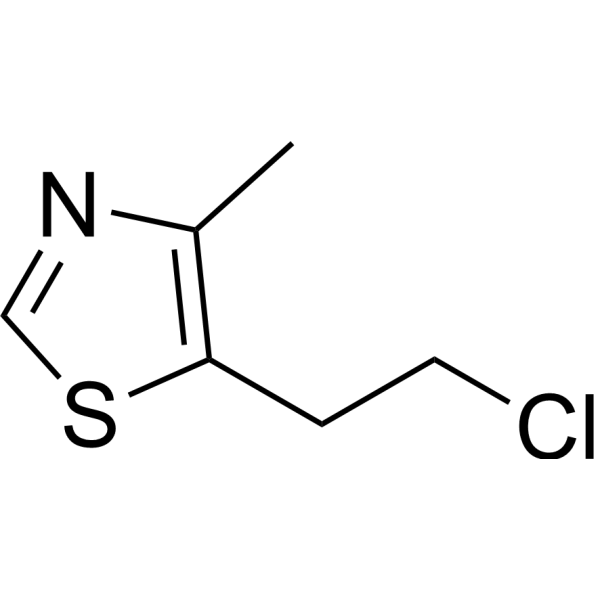
-
- HY-146111
-
|
|
IRAK
|
Cancer
|
|
IRAK4-IN-13 (compound 21) is a potent and selective IRAK4 inhibitor with an IC50 of 0.6 nM. IRAK4-IN-13 shows high metabolic clearance with human liver microsomes (HLM) intrinsic clearance is 96 µL/min/mg .
|
-
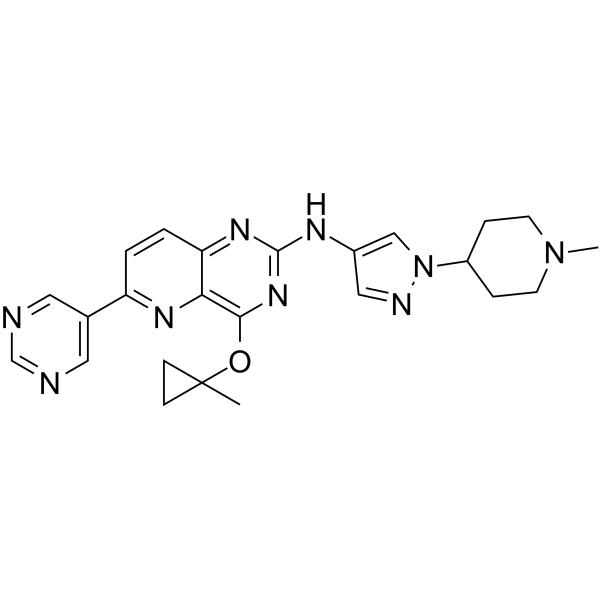
-
- HY-163032
-
|
|
FABP
|
Cardiovascular Disease
Metabolic Disease
Inflammation/Immunology
|
|
FABP4-IN-3 (compound C3) is a highly selective FABP4 inhibitor (FABP4 Ki = 25 ± 3 a nM, FABP3 Ki = 15.03 μM) which exhibits a 601-fold selectivity over FABP3. FABP4-IN-3 also shows metabolic stability and potent cellular anti-inflammatory activity, making it promising to get involved in the research of metabolic disease, cardiac dysfunction and inflammation-related disease .
|
-
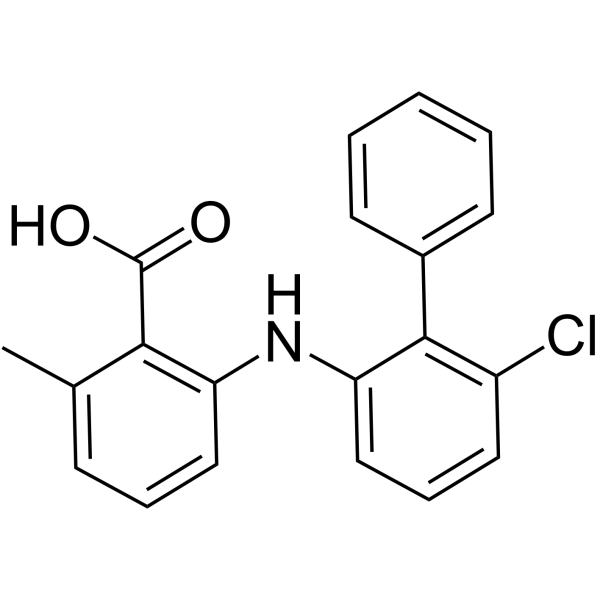
-
- HY-139721
-
|
|
HIV
|
Infection
|
|
Tenofovir-C3-O-C15-CF3 (ammonium) exhibits substantially longer t1/2 values than tenofovir in human liver microsomes, potent anti-HIV activity in vitro, and enhances pharmacokinetic properties in vivo.
|
-

-
- HY-151957
-
|
|
Bacterial
|
Infection
|
|
Antitubercular agent 34 (compound 42g) is an antitubercular agent. Antitubercular agent 34 inhibits the growth of MtbH37Rv with a MIC90 value of 1.25 μg/mL with the ability of escaping metabolic degradation by human liver microsomes. Antitubercular agent 34 can be used for the research of tuberculosis .
|
-
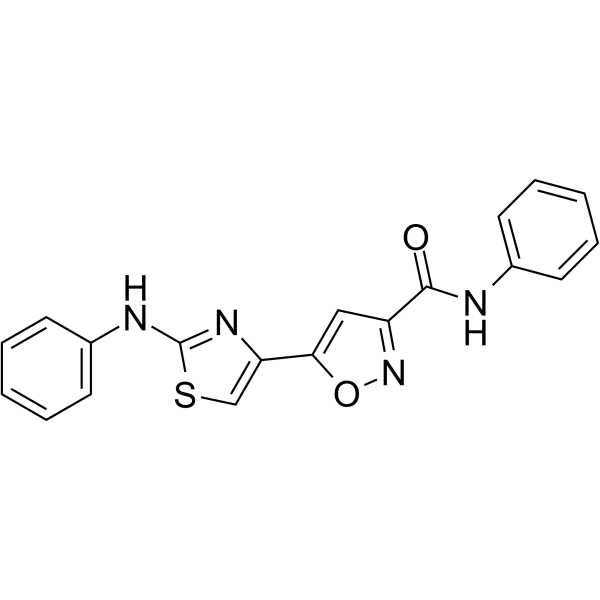
-
- HY-B0476S
-
|
Acetophenetidin-d5
|
COX
|
Inflammation/Immunology
|
|
Phenacetin-d5 is the deuterium labeled Phenacetin. Phenacetin (Acetophenetidin) is a non-opioid analgesic/antipyretic agent. Phenacetin is a selective COX-3 inhibitor. Phenacetin is used as probe of cytochrome P450 enzymes CYP1A2 in human liver microsomes and in rats[1][2][3].
|
-
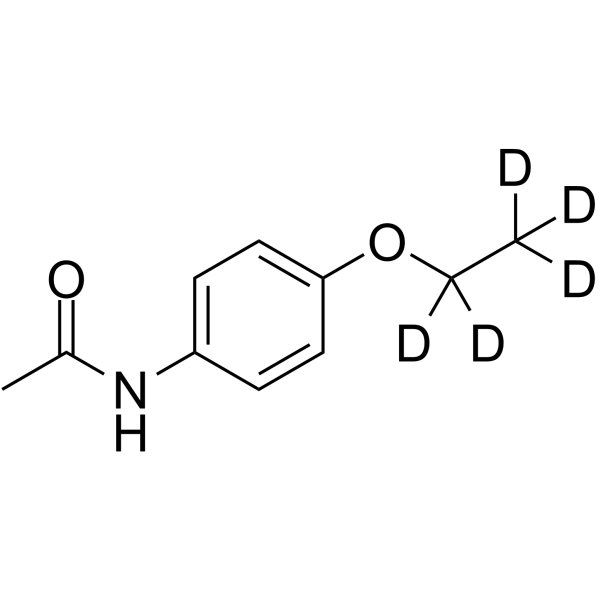
-
- HY-157931
-
|
|
Histamine Receptor
|
Neurological Disease
|
|
Anticancer agent 192 (compound XXI) is a steroid-based histamine H3 receptor antagonist with no affinity for muscarinics and hERG. Anticancer agent 192 is quite stable in human and rat liver microsomes. Anticancer agent 192 can improve the cognitive level and reduce the degree of addiction in rats in the in vivo addiction test .
|
-
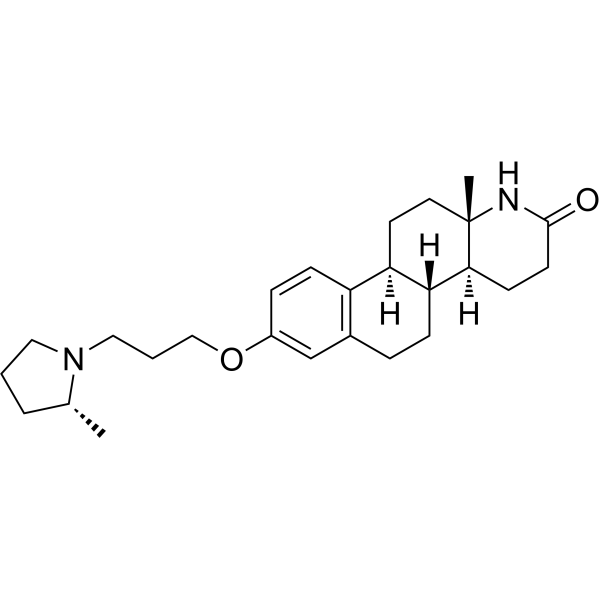
-
- HY-10864
-
URB-597
4 Publications Verification
KDS-4103
|
FAAH
Autophagy
Mitophagy
|
Neurological Disease
|
|
URB-597 (KDS-4103) is an orally bioavailable and selective FAAH inhibitor. URB-597 inhibits FAAH activity with an IC50s of approximately 5 nM in rat brain membranes, 0.5 nM in intact rat neurons, 3 nM in human liver microsomes. Antidepressant-like effects. Analgesic activity .
|
-
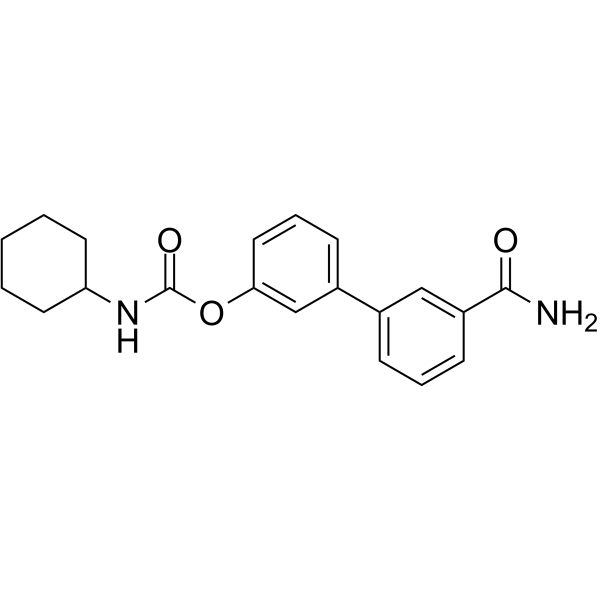
-
- HY-17614
-
|
SMT C1100; BMN 195; VOX-C1100
|
Cytochrome P450
|
Others
|
|
Ezutromid (SMT C1100) is a first-in-class, orally active benzoxazole utrophin modulator with an EC50 of 0.91 μM. Ezutromid can be used for the research Duchenne muscular dystrophy (DMD). Ezutromid inhibits CYP1A2 enzymic activity in human liver microsomes (HLM) with an IC50 of 5.4 μM .
|
-
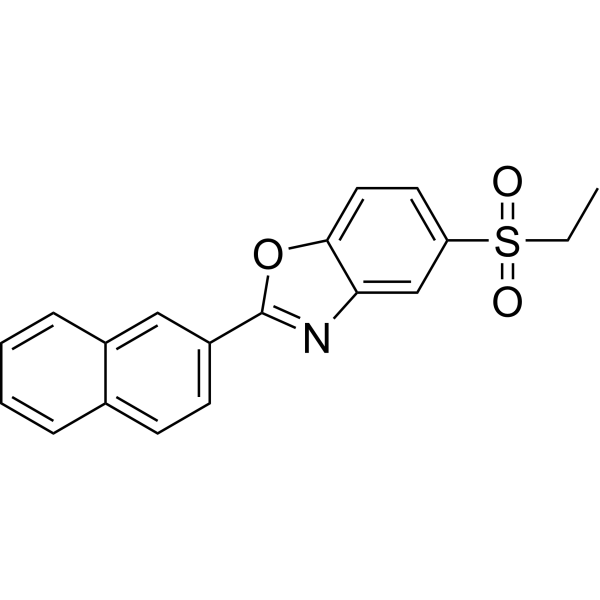
-
- HY-B0476S1
-
|
|
COX
|
Inflammation/Immunology
|
|
Phenacetin- 13C is the 13C labeled Phenacetin[1]. Phenacetin (Acetophenetidin) is a non-opioid analgesic/antipyretic agent. Phenacetin is a selective COX-3 inhibitor. Phenacetin is used as probe of cytochrome P450 enzymes CYP1A2 in human liver microsomes and in rats[2][3][4].
|
-
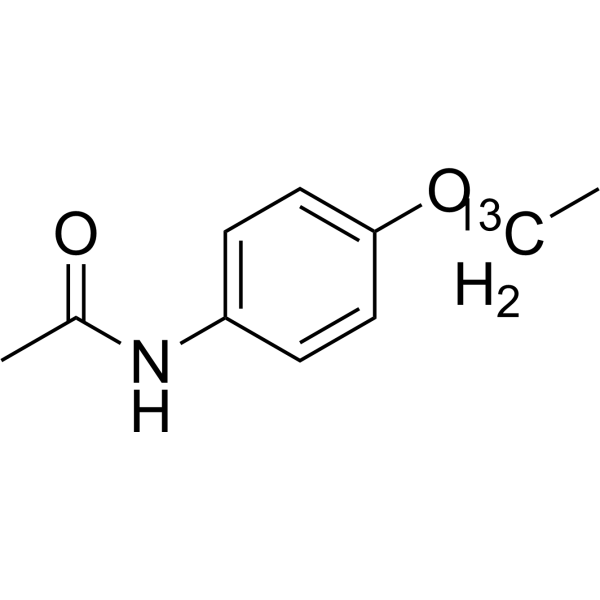
-
- HY-B0476R
-
|
Acetophenetidin (Standard)
|
COX
|
Inflammation/Immunology
|
|
Phenacetin (Standard) is the analytical standard of Phenacetin. This product is intended for research and analytical applications. Phenacetin (Acetophenetidin) is a non-opioid analgesic/antipyretic agent. Phenacetin is a selective COX-3 inhibitor. Phenacetin is used as probe of cytochrome P450 enzymes CYP1A2 in human liver microsomes and in rats .
|
-
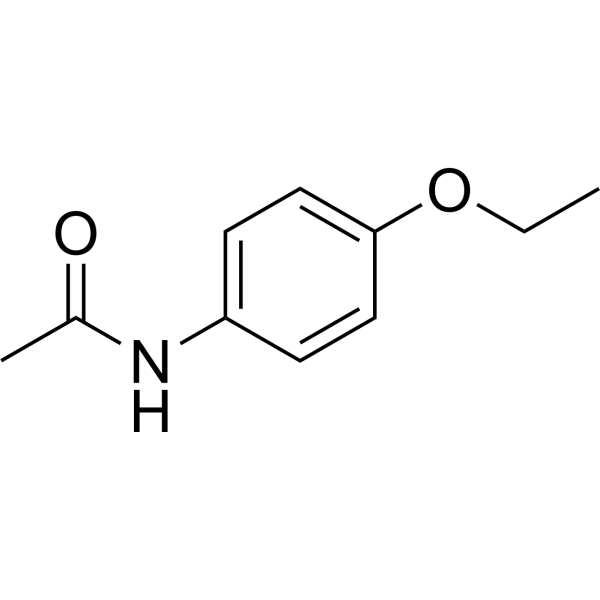
-
- HY-149481
-
|
|
Dopamine Receptor
|
Neurological Disease
|
|
D4R agonist-1 (Compound 16f) is a D4R partial agonist (Ki: 2.2 nM). D4R agonist-1 is metabolically stable in rat and human liver microsomes. D4R agonist-1 can be used for research of neuropsychiatric disorders .
|
-

-
- HY-143255
-
|
|
Phosphodiesterase (PDE)
|
Cancer
|
|
Enpp-1-IN-11 (compound 23) is a potent Ecto-nucleotide pyrophosphatase/phosphodiesterases 1 (ENPP1) inhibitor with an Ki value of 45 nM. Enpp-1-IN-11 exhibits low clearance in human and mouse liver microsomes, good plasma stability in human and mouse plasma. Enpp-1-IN-11 can be used for researching anticancer .
|
-
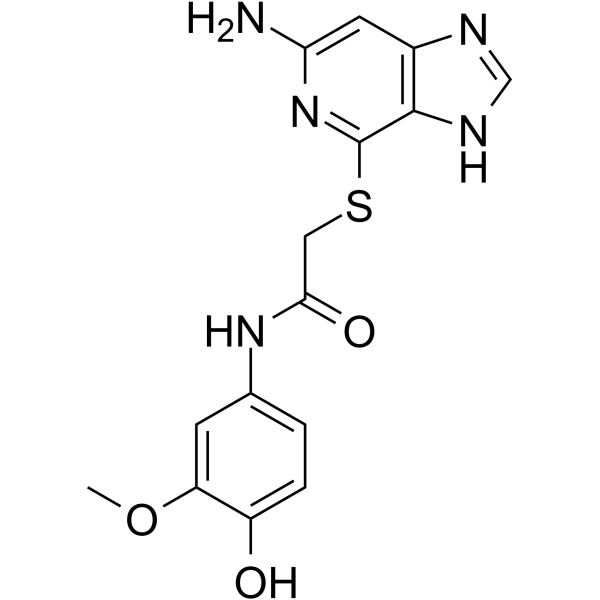
-
- HY-143326
-
|
|
Bacterial
|
Infection
|
|
Antibacterial agent 83 (compound 17h) displays potent antibacterial activity against various vancomycin-resistant Enterococcus faecalis (VRE) and methicillin-resistant Staphylococcus aureus (MRSA). Antibacterial agent 83 can significantly reduce the biofilm formation of MRSA and exhibited promising selectivity. Antibacterial agent 83 is metabolically stable in human liver microsomes .
|
-
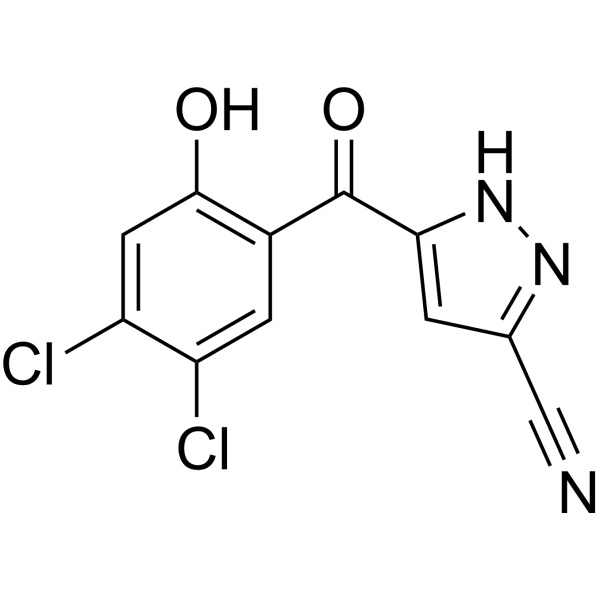
-
- HY-162408
-
|
|
Protease Activated Receptor (PAR)
|
Others
|
|
PAR4 antagonist 3 (Compound 36) is a selective antagonist for protease activated receptor 4 (PAR4). PAR4 antagonist 3 exhibits antiplatelet efficacy with IC50 of 26.1 nM. PAR4 antagonist 3 improves metabolic stablility in human liver microsomes with T1/2 of 97.6 min .
|
-
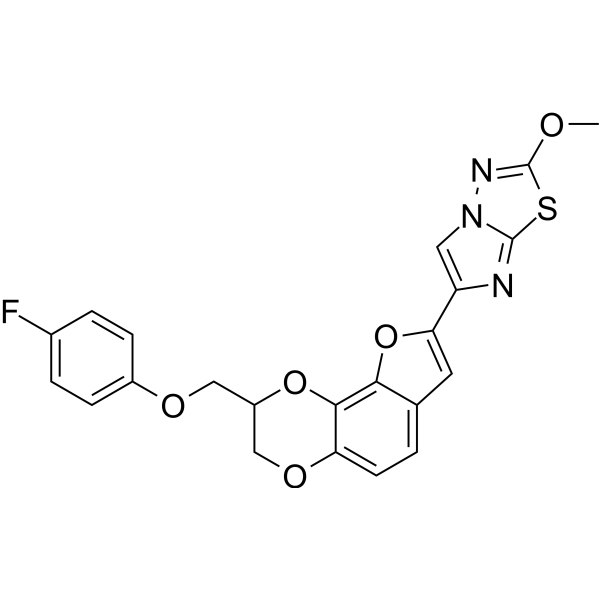
-
- HY-162409
-
|
|
Protease Activated Receptor (PAR)
|
Others
|
|
PAR4 antagonist 4 (Compound 37) is a selective antagonist for protease activated receptor 4 (PAR4). PAR4 antagonist 3 exhibits antiplatelet efficacy with IC50 of 14.2 nM. PAR4 antagonist 3 improves metabolic stablility in human liver microsomes with T1/2 of 42.5 min .
|
-
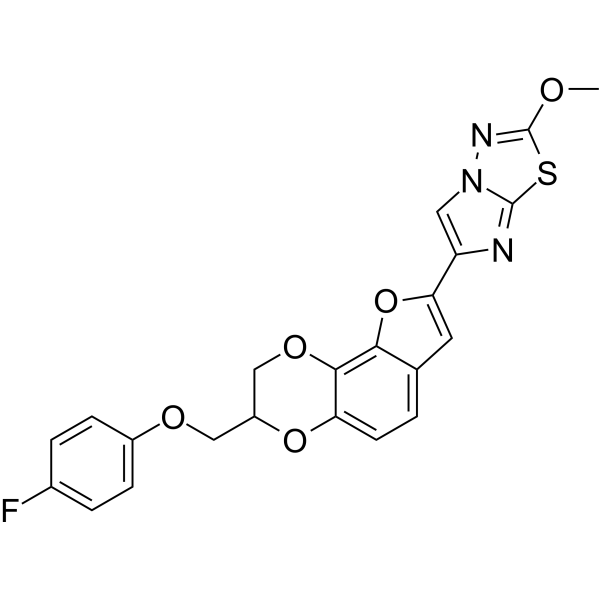
-
- HY-152118
-
|
|
Cytochrome P450
|
Cancer
|
|
CYP1B1-IN-4 is a 2,4-diarylthiazole compound with selectively CYP1B1 inhibition (IC50=0.2 nM). CYP1B1-IN-4 has little cytotoxicity and high stability in both human and rat liver microsomes .
|
-

-
- HY-150508
-
|
|
CD38
|
Cardiovascular Disease
Metabolic Disease
Inflammation/Immunology
|
|
MK-0159 is an orally active, potent and selective CD38 inhibitor, with IC50 values of 22, 3, and 70 nM for human, mouse and rat CD38, respectively. MK-0159 also shows good microsomal stability for human and rodent liver microsomes. MK-0159 increases NAD + (nicotinamide adenine dinucleotide) and reduces ADPR (adenosine diphosphate ribose) in whole blood and heart .
|
-
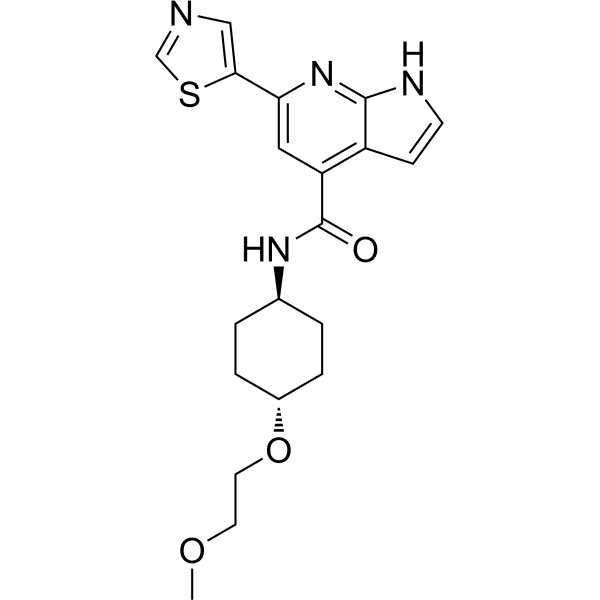
-
- HY-149920
-
|
|
Microtubule/Tubulin
|
Cancer
|
|
Anticancer agent 98 (compound 12k) is a microtubule/tubulin-polymerization inhibitor (Kd=16.9 μM). Anticancer agent 98 exerts antiproliferative potency against tumor cells, exhibits anti-angiogenesis effect in vitro. Anticancer agent 98 exhibits good human and mouse liver microsomes stability with both t1/2>300 min .
|
-
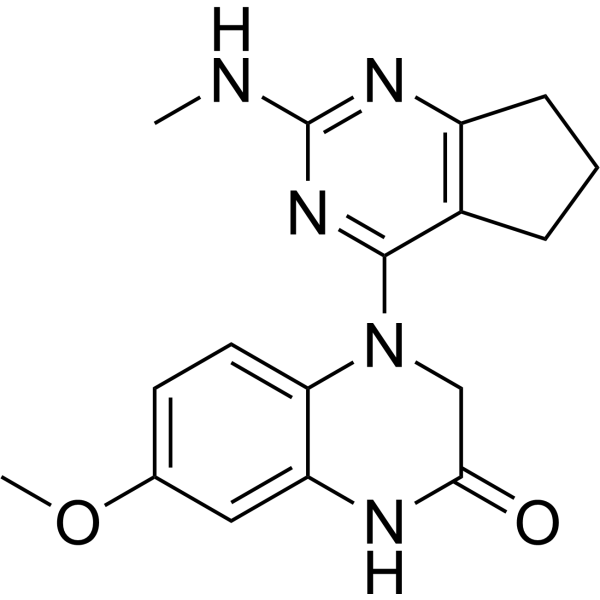
-
- HY-N0904
-
|
Ginsenoside compound K; Ginsenoside K
|
COX
NO Synthase
Cytochrome P450
|
Inflammation/Immunology
|
|
Ginsenoside C-K, a bacterial metabolite of G-Rb1, exhibits anti-inflammatory effects by reducing iNOS and COX-2. Ginsenoside C-K exhibits an inhibition against the activity of CYP2C9 and CYP2A6 in human liver microsomes with IC50s of 32.0±3.6 μM and 63.6±4.2 μM, respectively.
|
-
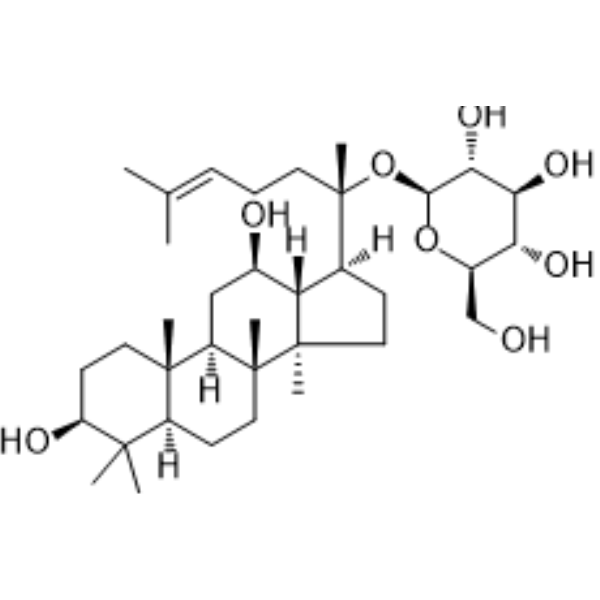
-
- HY-151958
-
|
|
Bacterial
|
Infection
|
|
Antitubercular agent-35 (compound 42l) is an antitubercular agent. Antitubercular agent-35 inhibits the growth of MtbH37Rv and M. Marinum with MIC90 values of 1.25 and 2 μg/mL, respectively. Antitubercular agent-35 shows the ability of escaping metabolic degradation by human liver microsomes. Antitubercular agent-35 can be used for the research of tuberculosis .
|
-
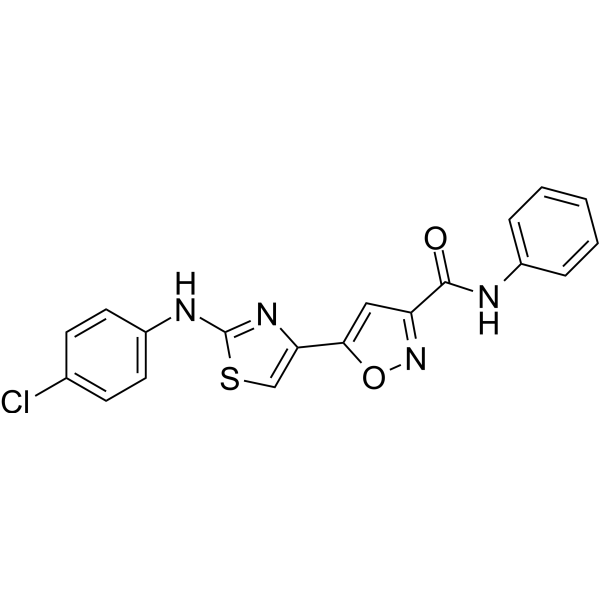
-
- HY-162238
-
|
|
Parasite
|
Infection
|
|
OSM-S-106 is a pro-inhibitor and that inhibition of PfAsnRS occurs via enzyme-mediated production of an Asn-OSM-S-106 adduct. OSM-S-106 inhibits protein translation and activates the amino acid starvation response. OSM-S-106 exhibits selective activity against Plasmodium blood and liver stages and low intrinsic clearance by human microsomes .
|
-

-
- HY-147754
-
|
|
Btk
JAK
|
Inflammation/Immunology
|
|
JAK3/BTK-IN-6 (compound 14h) is a potent BTK and JAK3 dual inhibitor, with IC50 values of 0.6 and 0.4 nM, respectively. JAK3/BTK-IN-6 shows good metabolic stability in human liver microsome. JAK3/BTK-IN-6 can be used for hematological and immune diseases research .
|
-
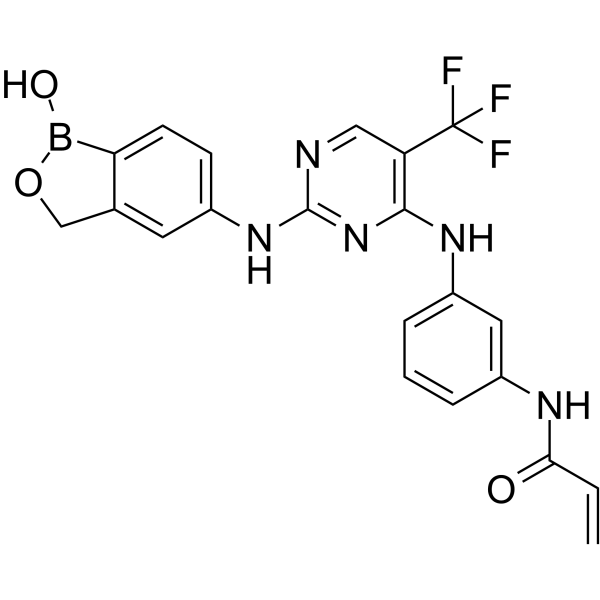
-
- HY-123639
-
|
N-(2-Phenylethyl)-indomethacin amide
|
COX
|
Inflammation/Immunology
Cancer
|
|
LM-4108 (N-(2-Phenylethyl)-indomethacin amide) is a selective and orally active COX-2 inhibitor with an IC50 of 0.06 μM for purified human COX-2. LM-4108 shows anti-inflammatory activity and may be effective in prevention of cancer. Half-lives for the disappearance of 10 μM LM-4108 in rat, human, and mouse liver microsomes were 11 min, 21 min, and 51 min, respectively .
|
-
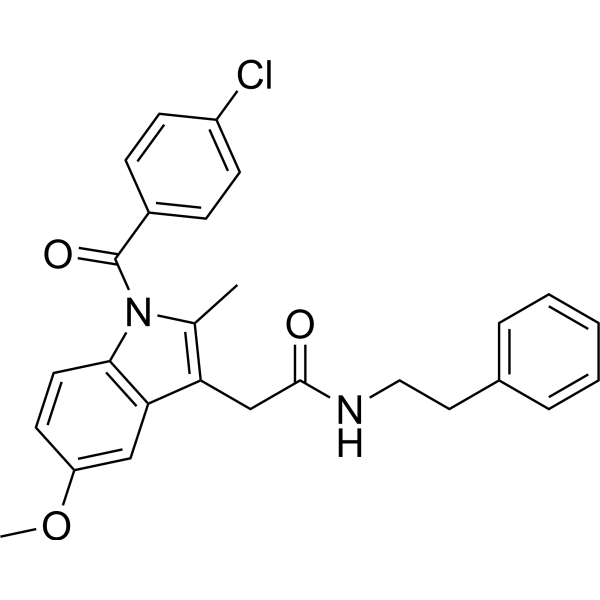
-
- HY-N7454
-
|
|
Antibiotic
Bacterial
|
Infection
|
|
Anhydroerythromycin A is a degradation product of the macrolide antibiotic erythromycin. Anhydroerythromycin A is formed via degradation of erythromycin in acidic aqueous solutions in vitro as well as in vivo. Anhydroerythromycin A is active against S. aureus and B. cereus in vitro (MICs = 12.5 and 6.25 μg/ml, respectively). Anhydroerythromycin A also inhibits steroid 6β-hydroxylase activity associated with the cytochrome P450 (CYP) isoform CYP3A in human liver microsomes.
|
-
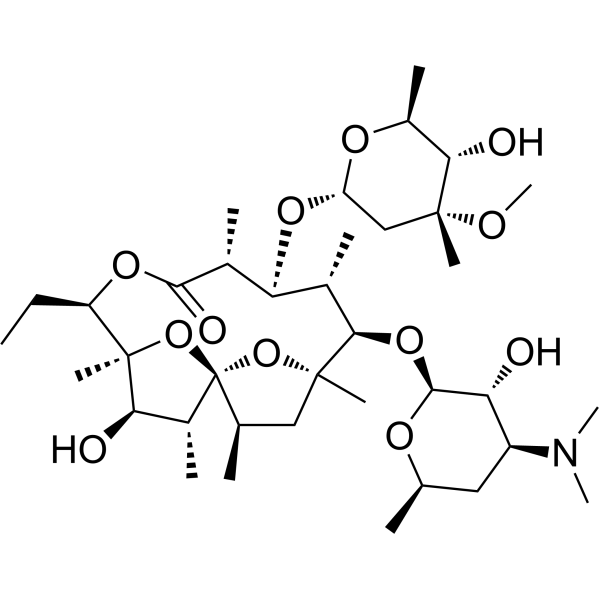
-
- HY-146410
-
|
|
Angiotensin Receptor
|
Others
|
|
AT2R antagonist 1 (compound 21) is a potent and high selective AT2R (angiotensin II AT2 receptor) ligand. AT2R antagonist 1 exhibits a fair AT2R affinity, with a Ki of 29 nM. AT2R antagonist 1 also inhibits common agent-metabolizing CYP enzymes. AT2R antagonist 1 shows high stability in human, rat and mouse liver microsomes .
|
-
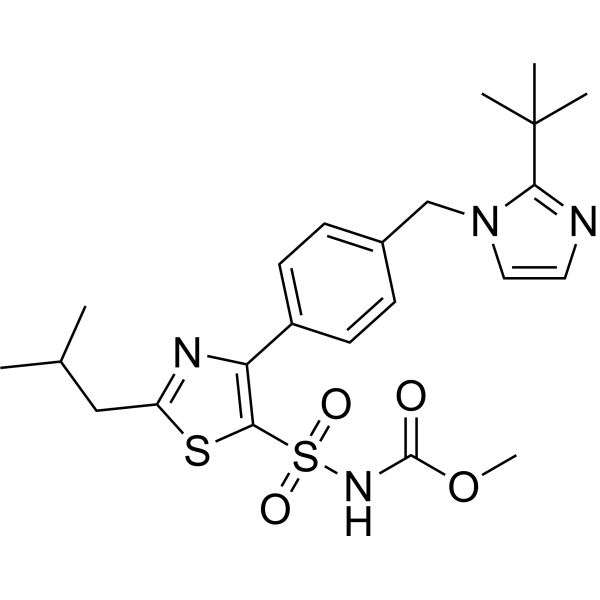
-
- HY-153394
-
|
|
Fungal
|
Infection
|
|
Aflatoxin Q1 is a hydroxy metabolite of Aflatoxin B1 (AFB1), which is a mycotoxin produced by Aspergillus flavus (A. flavus). Aflatoxin Q1, as well as and aflatoxin B1 8,9-oxide, is the major oxidative products formed from aflatoxin B1 in human liver microsomes, at all substrate concentrations. the 3 alpha-hydroxylation of aflatoxin B1 to aflatoxin Q1 is a potentially significant detoxication pathway .
|
-
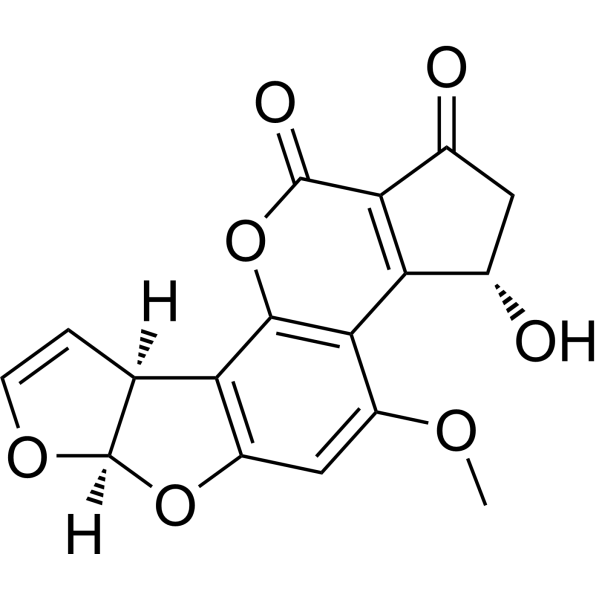
-
- HY-157325
-
|
|
RIP kinase
|
Inflammation/Immunology
|
|
RIPK2-IN-5 (compound 14) is a high affinity and excellent selectivity RIPK2 inhibitor with an IC50 value of 5.1nM. RIPK2-IN-5 has cellular anti-inflammatory effect and can reduce the secretion of MDP-induced TNF-α with a dose-dependent manner. RIPK2-IN-5 shows moderate stability in human liver microsome. RIPK2-IN-5 can be used for the research of immune diseases .
|
-
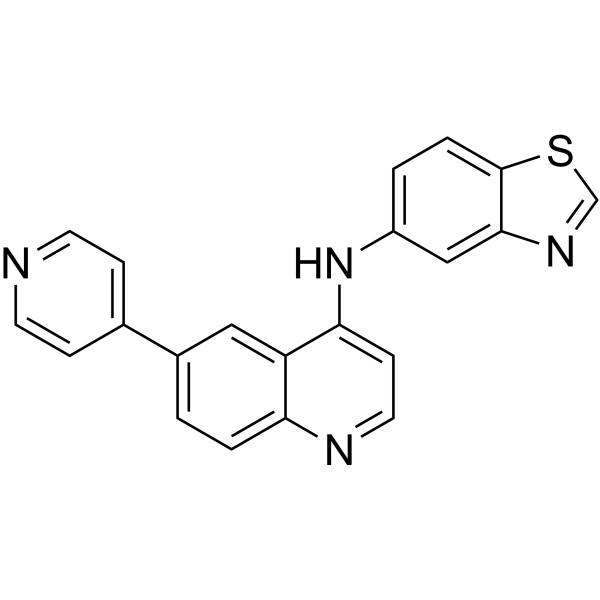
-
- HY-N0904R
-
|
Ginsenoside compound K(Standard); Ginsenoside K (Standard)
|
COX
NO Synthase
Cytochrome P450
|
Inflammation/Immunology
|
|
Ginsenoside C-K (Standard) is the analytical standard of Ginsenoside C-K. This product is intended for research and analytical applications. Ginsenoside C-K, a bacterial metabolite of G-Rb1, exhibits anti-inflammatory effects by reducing iNOS and COX-2. Ginsenoside C-K exhibits an inhibition against the activity of CYP2C9 and CYP2A6 in human liver microsomes with IC50s of 32.0±3.6 μM and 63.6±4.2 μM, respectively.
|
-
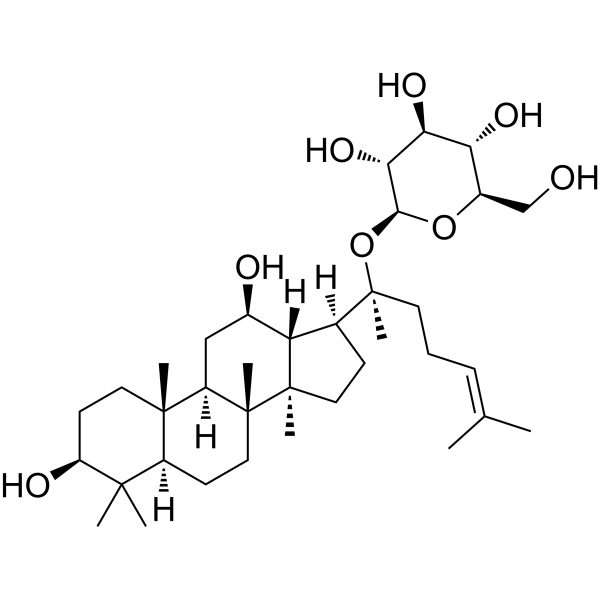
-
- HY-139722
-
|
|
HIV
|
Infection
|
|
Tenofovir-C3-O-C12-trimethylsilylacetylene (ammonium) exhibits substantially longer t1/2 values than tenofovir in human liver microsomes, potent anti-HIV activity in vitro, and enhances pharmacokinetic properties in vivo. Tenofovir-C3-O-C12-trimethylsilylacetylene (ammonium) is a click chemistry reagent, it contains an Alkyne group and can undergo copper-catalyzed azide-alkyne cycloaddition (CuAAc) with molecules containing Azide groups.
|
-

-
- HY-146486
-
|
|
P2Y Receptor
|
Inflammation/Immunology
|
|
P2Y2R/GPR17 antagonist 1 (Compound 14m) is a dual P2Y2R and GPR17 antagonist with IC50 values of 3.17 µM and 1.67 µM against P2Y2R and GPR17, respectively. P2Y2R/GPR17 antagonist 1 shows excellent metabolic stability in human liver microsomes .
|
-
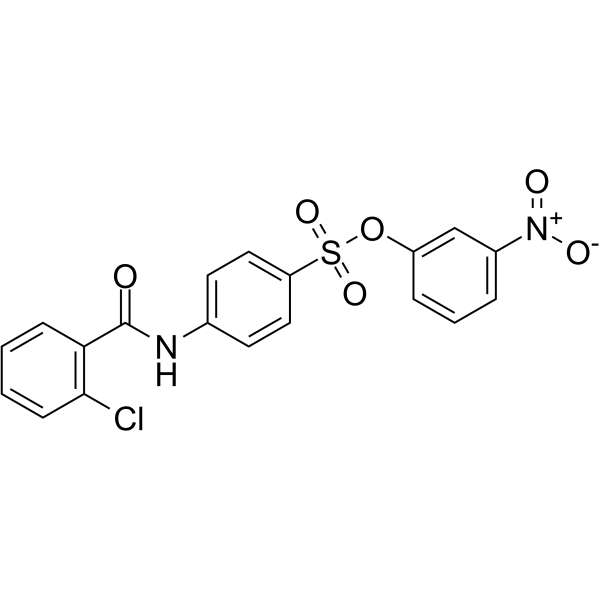
-
- HY-155051
-
|
|
Apoptosis
Histone Methyltransferase
|
Cancer
|
|
Antiproliferative agent-25 (Compound 3s4) is a selective PRMT5 inhibitor (IC50: 0.11 μM). Antiproliferative agent-25 up-regulates hnRNP E1 protein level. Antiproliferative agent-25 forms H-bond interactions with SAM and E444 residue of PRMT5. Antiproliferative agent-25 has antiproliferative effects against A549 cells by inducing apoptosis and inhibiting cell migration. Antiproliferative agent-25 has high clearances with T1/2 of only 21.8 and 4.7 min in human and rat liver microsomes .
|
-
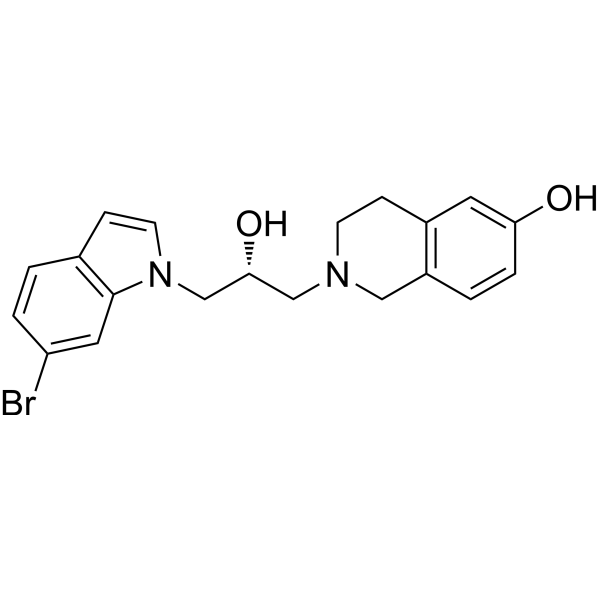
-
- HY-155141
-
|
|
Cytochrome P450
|
Cancer
|
|
hCYP3A4-IN-1 (compound C6) is a potent, orally active hCYP3A4 inhibitor. hCYP3A4-IN-1 shows the IC50 values of 43.93 nM and 153.00 nM against hCYP3A4 in human liver microsomes (HLMs) and CHO-3A4 stably transfected cell line, respectively. hCYP3A4-IN-1 potently inhibits CYP3A4-catalyzed N-ethyl-1,8-naphthalimide (NEN) hydroxylation in a competitive manner (Ki = 30.00 nM) .
|
-
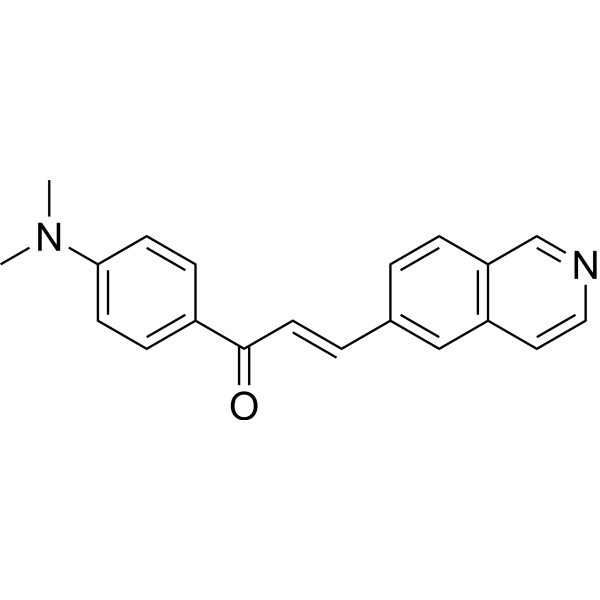
-
- HY-155050
-
|
|
Apoptosis
Histone Methyltransferase
|
Cancer
|
|
PRMT5-IN-31 (Compound 3m) is a selective PRMT5 inhibitor (IC50: 0.31 μM). PRMT5-IN-31 up-regulates hnRNP E1 protein level. PRMT5-IN-31 occupies the substrate site of PRMT5 and forms essential interactions with amino acid residues. PRMT5-IN-31 has antiproliferative effects against A549 cells by inducing apoptosis and inhibiting cell migration. PRMT5-IN-31 has high metabolic stability on human liver microsomes (T1/2: 132.4 min) .
|
-

| Cat. No. |
Product Name |
Category |
Target |
Chemical Structure |
| Cat. No. |
Product Name |
Chemical Structure |
-
- HY-B0476S
-
|
|
|
Phenacetin-d5 is the deuterium labeled Phenacetin. Phenacetin (Acetophenetidin) is a non-opioid analgesic/antipyretic agent. Phenacetin is a selective COX-3 inhibitor. Phenacetin is used as probe of cytochrome P450 enzymes CYP1A2 in human liver microsomes and in rats[1][2][3].
|
-

-
- HY-B0794S
-
|
|
|
AZ7550-d5 is the deuterium labeled AZ7550 (HY-B0794). AZ7550, an active metabolite of Osimtinib (AZD9291; HY-15772), inhibits the activity of IGF1R with an IC50 of 1.6 μM[1][2].
|
-

-
- HY-B0476S1
-
|
|
|
Phenacetin- 13C is the 13C labeled Phenacetin[1]. Phenacetin (Acetophenetidin) is a non-opioid analgesic/antipyretic agent. Phenacetin is a selective COX-3 inhibitor. Phenacetin is used as probe of cytochrome P450 enzymes CYP1A2 in human liver microsomes and in rats[2][3][4].
|
-

Your information is safe with us. * Required Fields.
Inquiry Information
- Product Name:
- Cat. No.:
- Quantity:
- MCE Japan Authorized Agent:






















































